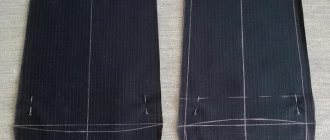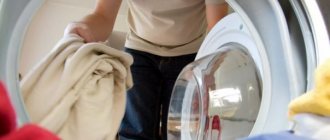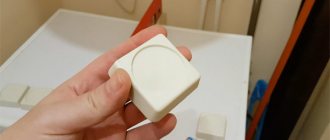The operation of the sewing machine is described in detail in the instructions for any sewing machine. Try to comply with the requirements of this manual. Lubricate your sewing machine periodically using only special sewing machine oil. Take care not only of the appearance of the sewing machine, but also clean its internal compartments of frays, dirt, and oil residues.
If you want to see how to properly oil your sewing machine, watch this video. You will learn how to lubricate all components and mechanisms of a sewing machine, including those located inside the body.
Proper operation of sewing machines is the key to operation without breakdowns
Proper operation of sewing machines is the key to its long-term operation without breakdowns. Unfortunately, often we simply don’t even read the instruction manual to the end. We figured out how the sewing machine works, and that’s enough, let’s start sewing. However, based on experience, we can conclude that the main cause of sewing machine breakdowns is non-compliance with the operating rules clearly indicated in the sewing machine manual.
In addition to the lubrication diagram for the sewing machine and the brand of machine oil, the instructions provide recommendations for selecting sewing needles, indicate which fabrics can be sewn on this machine, which sewing threads are best to use, etc.
A sewing machine, be it a Chaika or the latest computer-controlled Singer, is, first of all, a mechanism that requires periodic lubrication and maintenance. However, it is worth noting that many modern models use super-sliding materials that do not require lubrication of the machine at all. But such “happiness” can be bought for no less than $500.
Any sewing machine is designed for certain loads of components and parts, and sewing thick and coarse fabrics on household seamstresses is the main reason for the breakdown and failure of components in many of them. Untimely lubrication of the sewing machine or lack thereof at all is the second reason, and improper storage of the sewing machine is the third.
Machines with vertical shuttle.
Cleaning and lubricating the shuttle.
Vertical swinging shuttles are most in need of cleaning and lubrication. Even in imported sewing machines.
Instructions:
- We take out the bobbin case.
- We move the latches (mostly plastic, black): left - left, right - right.
- Remove the locking ring and take out the crescent shuttle.
The most important thing is to thoroughly clean the grooves of the shuttle body from dust and dirt: the place where the shuttle rotates*
After cleaning, lubricate with oil (preferably transparent), the grooves of the shuttle body - 2-4 drops on the left and right. See photo:
Reassemble in reverse order.
Important: when assembling the vertical shuttle device, the needle bar and needle must be in the upper position. The crescent-moon shuttle pusher and the crescent-moon shuttle should look at each other (until a full circle).
Regular lubrication of the sewing machine is the main condition for operation.
In many cases, repair of sewing machines will not be necessary if you carefully care for the sewing machine, keep it clean, and lubricate it with sewing oil in a timely and regular manner. If a seamstress takes care of her machine, then she will probably protect it from overload during work and not leave it in the hands of others, which means it will break down less often.
After prolonged work, you should periodically clean the shuttle compartment and other accessible places from dust, fringes, and oil stains. Sometimes, you should clean the shuttle itself, the shuttle mechanism, and the bobbin case with a hard hair brush. Over time, thread and fabric frays and dust accumulate in the bobbin case. They become compacted and interfere with the free rotation of the bobbin.
For each machine, the operating instructions include a sewing machine lubrication diagram. However, you can follow a simple rule - lubricate any metal components that have friction. Even the grooves in which the shuttle rotates can be lubricated with one or two drops of machine oil. It is advisable to sometimes remove the bottom cover and lubricate the lower “inaccessible” rotating units with sewing oil. Just be careful not to remove those housing covers that you will not be able to put back on the machine after lubricating them.
Cleaning
During sewing, the bobbin compartment gets dirty the most, where thread fragments and material flakes get caught, which can impede the movement of the bobbin. It is recommended to clean the shuttle mechanism every month. Before work, you should carefully study the instructions for the machine, prepare a brush or brush with hard bristles and a piece of soft cloth.
The cleaning algorithm looks like this:
- Disconnect the machine from the electrical network.
- Remove the needle and presser foot. Open access to the shuttle compartment (according to the instructions for the machine). Pull out the bobbin and bobbin holder.
- Use a brush to clean the bobbin holder, removing frays, threads and dust, and wipe the surface with a soft cloth.
- Clean the teeth of the lower conveyor.
- Wipe the surface of the shuttle compartment. For a vertical shuttle, if necessary, lubricate it as will be described later in the corresponding paragraph of the article. The horizontal hook does not require lubrication.
- Reinstall the bobbin holder and needle plate.
At the same time as cleaning, it is convenient to replace the old needle if it has been in use for a long time.
On some models, it is also recommended to clean the inside of the thread guide under the top cover.
Sewing oil for lubricating sewing machines and overlockers
It is better to take sewing oil or it is also called machine oil into a medical syringe and drop small drops into accessible places. More precisely, in those places where there is friction of metal parts with each other. The instructions for the sewing machine indicate lubrication points, but you can take the initiative and remove the top cover, bottom cover and find those components that are hidden under them and are not indicated in the instructions. After such thorough lubrication, the machine will work twice as quiet and softer, “purring” like a cat that has been stroked by its owner.
And, most importantly, you cannot use any other brand of oil other than sewing machine oil. Unfortunately, cases of using unsuitable oils, including sunflower oil, are not uncommon. The use of oils that are not specified in the operating instructions for the sewing machine sometimes leads to the fact that it does not turn and “jams.” Some types of oil tend to dry out over time, turning into glue, “tightly” gluing the lubricated parts. For information on how to “use” such a machine, see the article Sewing machine Podolsk.
What kind of oil to lubricate parts
Use only special sewing machine oil. It is usually included with the tools in a small container. The substance is a silicone lubricant and is characterized by transparency, medium viscosity, and oxidation resistance.
If you don’t find oil in the kit, look for it at a hardware store (ask for universal household oil or special sewing oil).
Important: Car engine oil is not recommended: it is dangerous for car parts! The same goes for vegetable oil. Their characteristics do not meet the requirements.
It is advisable to lubricate your sewing machine at least once every six months.
It is advisable to lubricate a sewing machine or a household overlocker at least once every six months. After lubrication, you need to run it “idle” for a while, especially if the machine has not been used for a long time. During operation, the oil heats up slightly and penetrates better into friction units and areas. This recommendation is more suitable for old-style sewing machines, such as Podolskaya 2M PMZ, Singer, etc.
Many modern machines do not require lubrication at all. This is possible through the use of modern technologies that use super-slippery artificial polymers at friction points instead of metal. In such machines, lubrication can only do harm. Therefore, carefully read your sewing machine operating instructions, especially when buying a new machine. The manual for it always details the rules for care and use. The instructions also indicate how to lubricate it, in what places and how often. What fabrics can be sewn, the type of needles used, etc. Do not neglect the recommendations of the sewing machine operating instructions. It was compiled by the engineers who created this machine. They write, of course, boringly, but they know very well what they are writing about.
How often should you lubricate your machine?
It all depends on how often you sew on it. For example, I oil my sewing machine once a month, because I sew on it three to four times a week. If you sew even less often, then oil treatments can be carried out once a quarter.
Don't forget that how well and how long your tools will serve depends primarily on your attitude towards them. Have a productive sewing week everyone!
Seamstresses quite often replace hand tools and devices familiar to the older generation with automated sewing machines of various types. Each of them is suitable for a specific type of work and has its own functional features. Previously, no one could even dream about this. Despite such a wide variety, all machines require almost the same care and maintenance measures. These include lubrication of the main working units with special oil. This is necessary not only to extend the service life of the unit, but also for its flawless operation.
What can be used for lubrication?
Oil suitable for lubricating sewing mechanisms, door locks and similar mechanics is only industrial oil. It has a special composition that is light and fluid enough so that dust and metal particles (scraped from parts during work) do not create a sticky and viscous substance with it. That, in turn, noticeably slows down the rotation and reciprocating movement of the moving elements.
The use of other oils is unacceptable.
Vegetable oil evaporates quickly when parts become warm from friction during long periods of operation. It easily oxidizes and decomposes in the open air and at slightly higher temperatures than room temperature.
Animal fats - butter, lard and similar products - are also subject to accelerated evaporation. The more refractory fat is used, the faster an oily-sticky coating forms, half of which is formed by solid particles. And the fat itself, when frozen, will add “slowness” to the machine.
Engine oil. If your choice falls on motor oil, choose a composition with a lower viscosity for summer driving. The fact is that the sewing machine will most likely be used at home and in a warm place even in winter, and not in the cold in a gazebo, so it makes no sense to use “winter” and overly viscous oils. But this is a last resort. It will come in handy when it is not possible to urgently go for a bottle of “door” oil, but the work is standing still, and it is urgently necessary to continue it.
Oil waste. Its structure is broken. Fatty hydrocarbons used as lubricating oils lose their properties, including water-repellent properties. They evaporate many times faster than fresh motor oil.
To check how a “third-party” lubricant behaves, lubricate a bicycle chain and try to ride a hundred kilometers on such a bicycle. After several tens of kilometers, the oily-sticky mud formed by dust with such a lubricant will become viscous, like tar. As a result, the pedals will turn with noticeably greater effort than with a chain and sprockets lubricated with industrial oil - as if you were going uphill. The machine will behave in exactly the same way - the sewing speed may decrease by two or more times.
But as soon as you notice that the speed of the machine began to drop (for example, by the frequency of the needle bar mechanism and the clicks of the shuttle, the “howl” of the engine), wait a while with the work:
- disassemble the machine;
- clean and lubricate its mechanisms;
- then reassemble it.
Why do you need oil?
Any new equipment comes with instructions that describe in detail how to care for the unit. The instructions should be carefully stored - it is not known when the next time you will need them. Among other things, it indicates how to lubricate the sewing machine, but first you need to decide the question: do you need to lubricate it at all or can you limit yourself to cleaning?
Important! Some modern sewing devices do not need to be lubricated. Super-slip materials are used for their manufacture. There are no metal components there; they have been replaced by parts made of special plastics, which can be seriously damaged by machine oil. But don’t expect that by purchasing this miracle of technology you will be able to save money - such a unit is very expensive, so not even all elite studios can afford such luxury.
The rest of the machines need to be lubricated, because they have a lot of metal parts. Lubrication will allow:
- extend the service life of your assistant;
- ensure a more even and high-quality stitch, since the needle will not jam and move jerkily;
- a well-oiled and oiled machine does not tear threads;
- the stroke becomes smooth, which allows you to sew even the most complex parts well;
- after lubrication, all components are easily adjusted;
- The machine does not rumble or grind - it works almost silently.
What else is in the instructions?
Regardless of whether your machine is old or ultra-modern, the instructions always indicate:
- what oil to lubricate a sewing machine;
- what fabrics can be sewn on it;
- which needles are better to choose;
- what threads are suitable for different fabrics and for your machine.
Important! If you buy a new “seamstress” from a good manufacturer, you will most likely find a bottle of machine oil in the kit. It will last for a long time, and in the future it is better to buy just that.
As for fabrics and sewing accessories, we must not forget that the machine is a mechanical device, that is, it is designed for certain loads. For example, the antediluvian Singer or “Podolsk” can even sew denim in six to eight layers, and many modern computer-controlled machines, if they do not have the function of working with coarse fabrics, will certainly fail from such treatment.
Old cars
If you find a treasure in your grandmother’s attic in the form of an old Singer or Podolsk, do not rush to call the antique store. If you love handicrafts, this find is a real treasure for you. The mere fact that it is probably still working speaks volumes. And there’s simply nothing there to break, so it’s easy enough to set up the machine and you can start working. It is even easier to lubricate than modern ones.
Option 1
On a manual machine you will find one or two latches that secure the body to the stand:
- Move them aside and lift the body - the insides will appear in front of you, and you can easily find the parts that need to be lubricated, that is, almost everything that moves.
- Older cars had all the parts made of metal, so just put some oil where they touch and that's it. Moreover, you can easily penetrate both the shuttle mechanism and the needle bar assemblies.
Option 2
If you have a foot-operated machine in front of you, the order will be the same. The valves move back, the body turns over - you can drip. You just need to lubricate the drive mechanism components.
Important! Old machines are less demanding on the quality of oil, so any machine oil will do, but vegetable oils should not be used in this case either.
Let's disassemble the machine
Looking at your “iron seamstress”, you will immediately see a number of screws. If possible, you should unscrew everything, and so that they don’t get lost, put them on a white sheet of paper or in a box.
Important! It is best to mark the screws and the places from which each of them is unscrewed - for example, with numbers: hole No. 1 - screw No. 1, hole No. 2 - screw No. 2, etc. It is, of course, inconvenient to write on the screws, so it is better to wrap each of them in a piece of paper with the same number.
Operating procedure:
- Remove the cover from the needle bar by unscrewing the screw and pulling the cover itself up and to the side.
- Place the machine on the table with the bottom facing you.
- Unscrew and mark the screws on the cover, as well as the holes - you will see two shafts.
- Pull the mode switch handle to the right and remove.
- Unscrew the side cover screw and remove it - the flywheel should remain in place.
- Remove the remaining screws.
- Remove the fasteners located under the handle.
- Lower the presser foot lifting handle down.
- Separate the halves of the plastic case from each other and remove one of them - now you can get to all the components, so there is no need to remove the other half.
- Slide the shuttle holder to the sides.
- Take out the shuttle and ring.
Lubricate the machine
A sewing machine has many components that will have to be processed through narrow holes. Therefore you need:
- machine oil;
- syringe.
Procedure to properly lubricate your sewing machine:
- Place the disassembled machine as if you were going to sew.
- Fill the syringe with some oil.
- Slowly turn the handwheel counterclockwise.
- Drop oil onto all the parts that begin to move - you need to drip where these parts touch and rub against each other. Plastic gears cannot be touched; they already have a special lubricant on them, and machine oil will only damage them.
- Lubricate the rubbing parts of the needle bar.
- Remove excess with a lint-free cloth.
- Connect the cord and check the movement - it should be smooth and even.
- Assemble the machine.
- Let it sit for a couple of hours.
- Work for ten minutes with the presser foot raised and without thread.
- If oil drops leak from any components, remove them.
Machines with a rotating rotary shuttle.
These are old VERITAS cars, modern BERNINA, PFAFF cars (limited number of models), they are installed in some models of cars from Chinese companies. The rotating shuttle is the most durable and high-quality, allowing you to sew at high speed. Therefore, they are installed in almost all models of industrial machines. It is enough to keep this shuttle clean (brush) and drip about 3 drops of oil between its movable and stationary parts.
In all sewing machines, the needle bar block and its adjacent hinges should be cleaned and lubricated. To do this, remove the left cover (where the light bulb is located), clean out the dust and dirt with a brush, and apply oil to the needle bar rod and adjacent hinges.
It is very useful to clean the dust between the teeth of the fabric conveyor (rack). In my practice, there have been cases of motor breakdowns (expensive replacement) due to uncleaning of sewing equipment - the mechanisms jam, then the motor * burns out.
This Singer model is a true antique.
This model of an old Singer sewing machine can truly be called a real antique. Her sewing shuttle is not round, like those of conventional sewing machines, but long, like a bullet, into which the same elongated bobbin with thread is inserted. This machine is so outdated that it is not worth even trying to repair it. But we will assume that you have such a need. Then, to give you some confidence, let's say that the old Singer model has one unique property that allows it to sew without skipping. The needle, when it “meets” the nose of the shuttle, creates a loop for capture twice.
Perhaps this technical feature of the machine became the reason for the myth about the flawless sewing of any fabric on an old Singer sewing machine. In fact, any Podolsk manual machine, and even more so modern machines, sew much better and faster. In addition, they have a zigzag stitch, on the basis of which many additional operations and stitches are provided.
Which components need to be lubricated?
When you first think about how to lubricate a Singer, Chaika or any other sewing machine, decide which parts need it. This is usually indicated in the instructions. But if suddenly there are no instructions, lubricate all metal components where there are parts that are subject to friction.
Important! You can even process the grooves in the shuttle compartment - it won’t make anyone worse, but it may even be beneficial.
You will need some free space. Keep in mind that on the table where you will tidy up your assistant, there should not be any valuable things that can be stained with machine oil. In addition to the table itself, you need:
- oilcloth or plastic film;
- screwdriver with a narrow blade;
- napkins or a sheet of writing paper;
- white sheet or small box;
- lint-free rags;
- felt-tip pen.
Important! Oilcloth and polyethylene can be successfully replaced with old newspapers or an unnecessary rag. The main thing is not to stain the table, but how you achieve this is the tenth matter. As for the screwdriver, it should be small, but strong and convenient.











